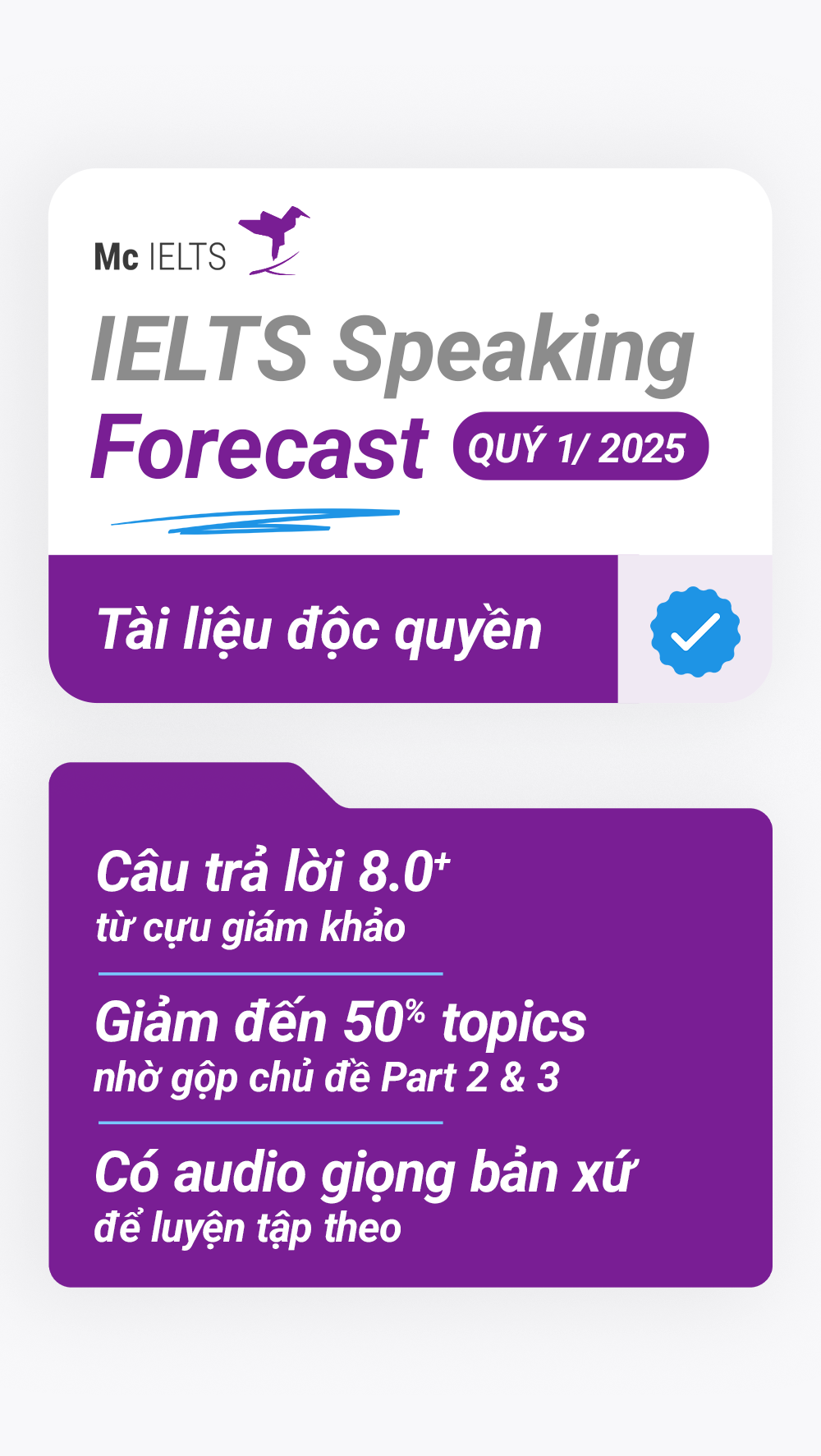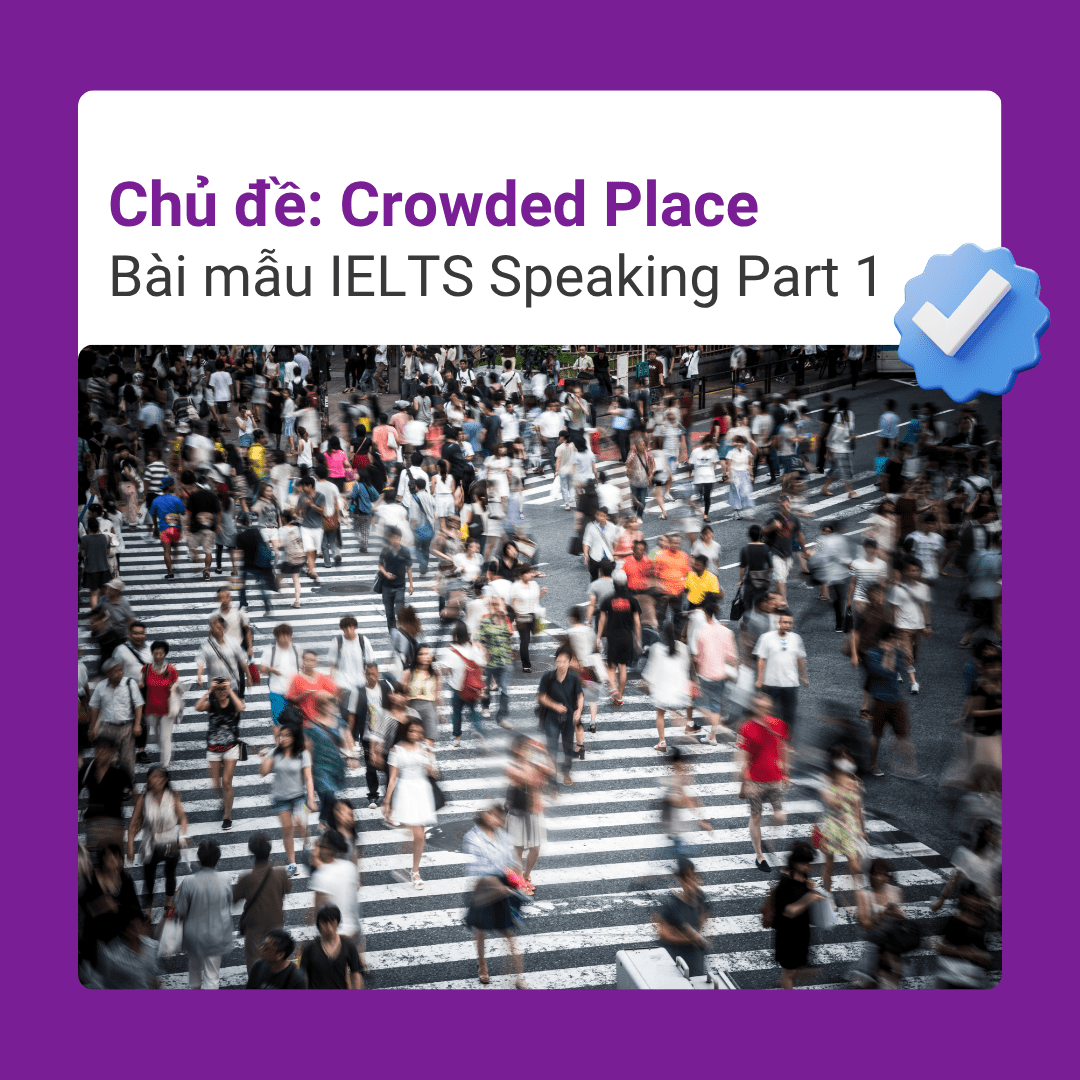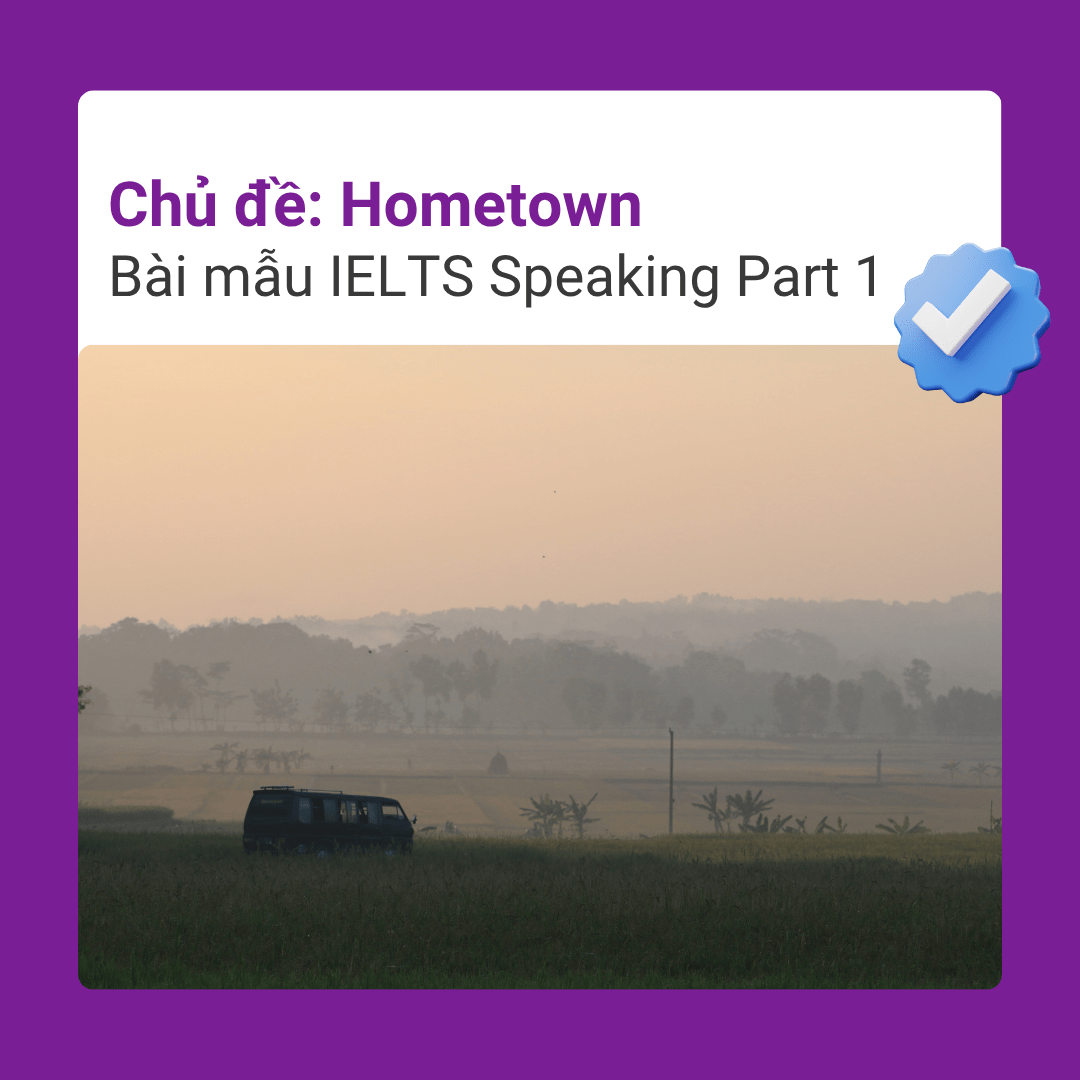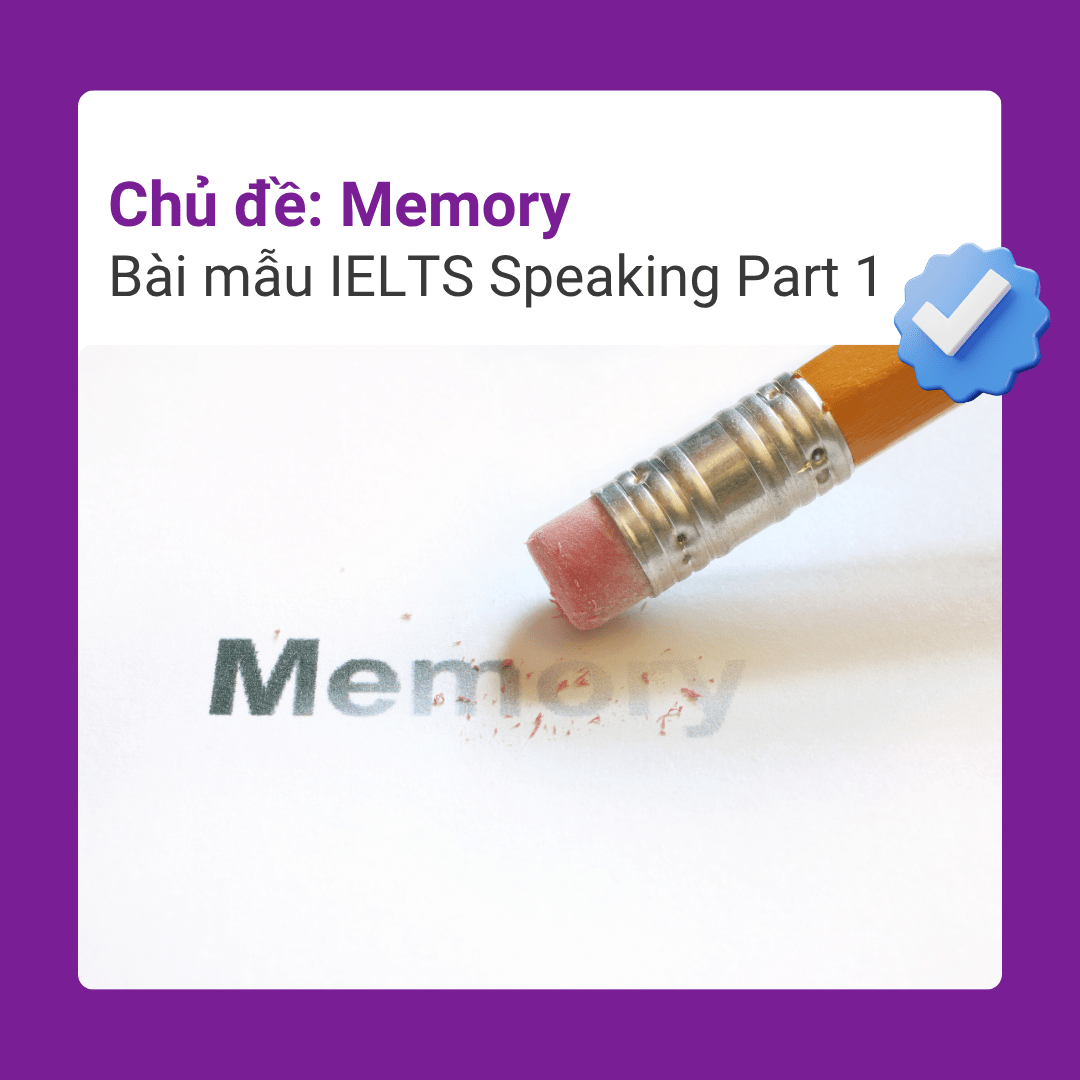LUYỆN ĐỀ IELTS READING CHỦ ĐỀ VOX- Covid-19
 05/03/2024
05/03/2024
 Tác giả : Teacher Tri
Tác giả : Teacher Tri
Link video
https://drive.google.com/file/d/1PpXz4LBpYwm94e2zoV0Cn8K9ffzd5V5b/view?usp=drive_link
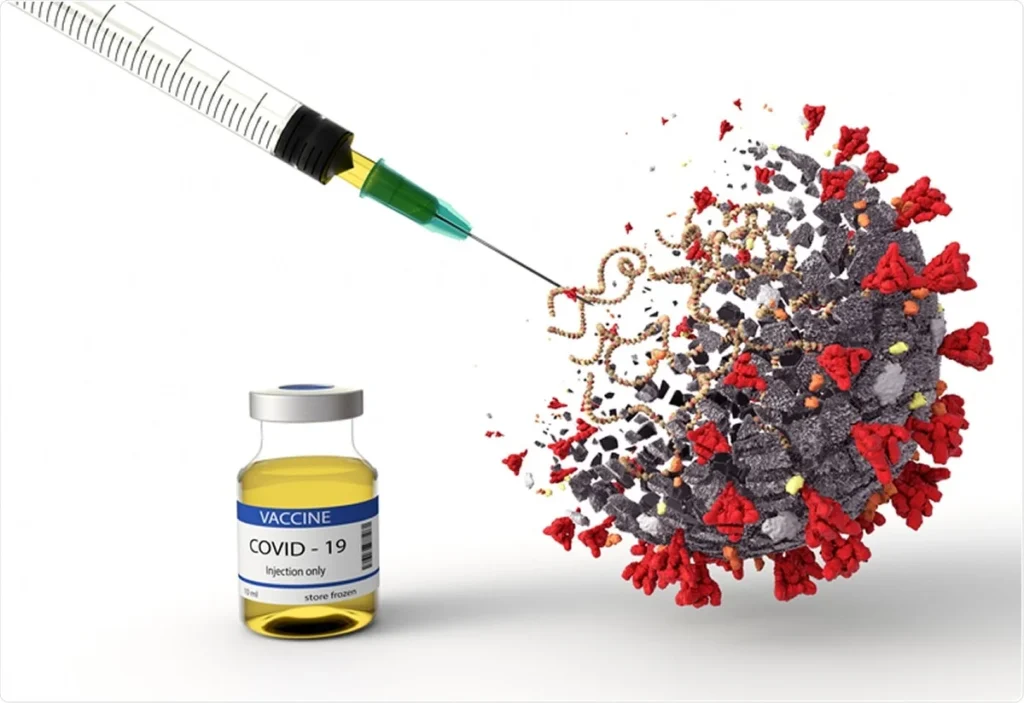
Reading Passage
This is the new one-dose Covid-19 vaccine from Johnson & Johnson. In early March, more than 6,000 doses were supposed to be shipped to the city of Detroit, Michigan. But the mayor said, no thanks. “Moderna and Pfizer are the best. And I am going to do everything I can to make sure the residents of the city of Detroit get the best.” He was referring to these numbers: the vaccines’ “efficacy rates.” The vaccines from Pfizer/BioNTech and Moderna have super high efficacy rates: 95 and 94 percent. But Johnson & Johnson? Just 66%.
And if you only look at these numbers, it’s natural to think that these vaccines are worse than these. But that assumption is wrong. These numbers are arguably not even the most important measure of how effective these vaccines are. To understand what is, you first have to understand what vaccines are even supposed to do. A vaccine’s efficacy rate is calculated in large clinical trials, when the vaccine is tested on tens of thousands of people. Those people are broken into two groups: half get the vaccine, and half get a placebo. Then, they’re sent out to live their lives, while scientists monitor whether or not they get Covid-19 over several months.
In the trial for Pfizer/BioNTech, for example, there were 43,000 participants. In the end, 170 people were infected with Covid-19. And how those people fall into each of these groups determines a vaccine’s efficacy. If the 170 were evenly split, that would mean you’re just as likely to get sick with the vaccine as without it. So it would have a 0% efficacy. If all 170 were in the placebo group, and zero people who got the vaccine were sick, the vaccine would have an efficacy of 100%. With this particular trial, there were 162 in the placebo group, and just eight in the vaccine group. It means those who had the vaccine were 95% less likely to get Covid-19: The vaccine had a 95% efficacy.
Now, this doesn’t mean that if 100 people are vaccinated, 5 of them will get sick. Instead, that 95% number applies to the individual. So, each vaccinated person is 95% less likely than a person without a vaccine to get sick, each time they’re exposed to Covid-19. And every vaccine’s efficacy rate is calculated in the same way. But each vaccine’s trial might be done in very different circumstances.
“So, one of the biggest considerations here, when we look at these numbers, is the timing in which these clinical trials were performed.” This is the number of daily Covid-19 cases in the US since the pandemic began. The Moderna trial was done completely in the US, here, in the summer. The Pfizer/BioNTech trial was primarily based in the US, too, and at the same time. Johnson & Johnson, however, held their US trial at this time, when there were more opportunities for participants to be exposed to infections. And most of their trial took place in other countries, primarily South Africa and Brazil. And in these other countries, not only were case rates high, but the virus itself was different.
The trials took place as variants of Covid-19 emerged, and became the dominant infections in these countries; variants that are more likely to get participants sick. In South Africa, most of the cases in the Johnson & Johnson trial were that of the variant, not the original strain that was in the US over the summer. And despite that, it still significantly reduced infections.
“If you’re trying to make one-to-one, head-to-head comparisons between vaccines, they need to have been studied in the same trial, with the same inclusion criteria, in the same parts of the world, at the same time.” “If we were to take Pfizer and Moderna’s vaccines, and redo their clinical trial at the same time that we saw J&J’s clinical trial, we might see quite different efficacy numbers for those.” These efficacy numbers really just tell you what happened in each vaccine’s trial, not exactly what will happen in the real world. But many experts argue this isn’t even the best number to judge a vaccine by anyway.
Because preventing any infection at all is not always the point of a vaccine. “The goal of a vaccine program for Covid-19 is not necessarily to get to ‘Covid zero,’ but it’s to tame this virus, to defang it, to remove its ability to cause serious disease, hospitalization, and death.” It helps to look at the different outcomes of an exposure to Covid-19 like this: The best-case scenario is, you don’t get sick at all. The worst case is death. In between, there’s being hospitalized, severe-to-moderate symptoms, or having no symptoms at all. In the absolute best circumstances, vaccines give you protection all the way to here.
But realistically, that isn’t the main objective of Covid-19 vaccines. The real purpose is to give your body enough protection to cover these possibilities, so if you do get an infection, it feels more like a cold than something you’d be hospitalized for. And this is one thing that every one of these Covid-19 vaccines do well. In all these trials, while some people in the placebo groups were hospitalized, or even died from Covid-19, not one fully vaccinated person, in any of these trials, was hospitalized or died from Covid-19.
“One thing that I wish that mayor would have understood, was that all three vaccines have essentially 100% effectiveness in protecting from death.” The mayor of Detroit did backtrack, and said he’d start taking Johnson & Johnson doses, because it’s still “highly effective against what we care about most.” Efficacy matters. But it doesn’t matter the most. The question isn’t which vaccine will protect you from any Covid infection, but which one will keep you alive? Or out of the hospital? Which one will help end the pandemic? And that’s any of them. “The best vaccine right now for you is the one that you’re offered.” “With each shot that goes into someone’s arm, we get closer to the end of this pandemic.”
Questions 1-5
Do the following statements agree with the information given in Reading Passage 1?
In boxes 1-5 on your answer sheet, write
TRUE if the statement agrees with the information
FALSE if the statement contradicts the information
NOT GIVEN if there is no information on this
1. The mayor of Detroit believed the Moderna and Pfizer vaccines were inferior to the Johnson & Johnson vaccine.
2. The Pfizer/BioNTech vaccine trial had fewer participants than the Johnson & Johnson trial.
3. The Johnson & Johnson vaccine trial in the US took place during a period of decreasing Covid-19 cases.
4. The primary goal of Covid-19 vaccines is to ensure no vaccinated person gets infected.
5. No participants in the vaccine groups of any of the trials were hospitalized or died from Covid-19.
Questions 6-10
Answer the questions below.
Choose NO MORE THAN THREE WORDS AND/OR A NUMBER from the text for each answer.
Write your answers in boxes 6-10 on your answer sheet.
6. How many total Covid-19 infections were recorded in the Pfizer/BioNTech trial?
7. What percentage efficacy did the Johnson & Johnson vaccine demonstrate?
8. Name one country where Johnson & Johnson’s trial was primarily conducted.
9. What season did the Moderna and Pfizer/BioNTech trials overlap?
10. What is the primary objective of Covid-19 vaccines according to the passage?
Questions 11-15
Choose the appropriate letters A, B, C or D.
Write your answers in boxes 10-12 on your answer sheet.
11. In the context of the passage, why are the efficacy rates of different vaccines not directly comparable?
A) Different manufacturing processes
B) Variations in trial timing and location
C) Differing ingredients in the vaccines
12. What does an efficacy rate of 95% indicate?
A) 95 out of 100 vaccinated people will not get sick
B) Each vaccinated person is 95% less likely to get sick compared to an unvaccinated person
C) The vaccine is 95% effective in all conditions
13. What significant factor differed in the Johnson & Johnson trial compared to the others?
A) Trial conducted in multiple countries
B) Use of a different virus strain
C) Higher number of participants
14. Why is achieving ‘Covid zero’ not the main goal of Covid-19 vaccines?
A) It’s impossible to achieve with current vaccines
B) The main aim is to reduce severity and prevent death
C) Vaccines are only effective for certain variants
15. What was the main reason for the mayor of Detroit’s initial refusal of the Johnson & Johnson vaccine?
A) Logistics issues
B) Lower efficacy rate
C) Lack of FDA approval
Answer key
True/False/Not Given Answers
1. False. The mayor believed Moderna and Pfizer were the best, implying he thought they were superior to Johnson & Johnson.
2. Not Given. The passage does not compare the number of participants in the Pfizer/BioNTech and Johnson & Johnson trials.
3. False. The Johnson & Johnson trial in the US took place when there were more opportunities for exposure, implying an increase in cases.
4. False. The primary goal of the vaccines is to reduce the severity of the disease, not necessarily to prevent all infections.
5. True. The passage states that in all trials, no fully vaccinated person was hospitalized or died from Covid-19.
Short Answer Questions Answers
6. 170. (The total number of infections in the Pfizer/BioNTech trial)
7. 66%. (Efficacy rate of the Johnson & Johnson vaccine)
8. South Africa. (One of the primary countries for the Johnson & Johnson trial)
9. Summer. (The season when the Moderna and Pfizer/BioNTech trials overlapped in the US)
10. To reduce severity/prevent death. (Primary objective of Covid-19 vaccines according to the passage)
Multiple Choice Questions Answers
11. B) Variations in trial timing and location.
12. B) Each vaccinated person is 95% less likely to get sick compared to an unvaccinated person.
13. A) Trial conducted in multiple countries.
14. B) The main aim is to reduce severity and prevent death.
15. B) Lower efficacy rate.
Giải nghĩa từ vựng
- Doses (Noun – plural)
- Định nghĩa: Liều lượng; số lượng cụ thể của một loại thuốc hoặc vắc-xin được đưa vào cơ thể.
- Example: The vaccine requires two doses for full effectiveness.
- Efficacy (Noun)
- Định nghĩa: Hiệu quả; khả năng tạo ra kết quả mong muốn hoặc có tác dụng như mong đợi.
- Example: The efficacy of the new drug is being studied in clinical trials.
- Rates (Noun – plural)
- Định nghĩa: Tỉ lệ; số lượng hoặc mức độ của một sự kiện trong một nhóm hoặc thời gian cụ thể.
- Example: The rates of infection have decreased significantly.
- Assumption (Noun)
- Định nghĩa: Giả định; việc tin hoặc chấp nhận điều gì đó là đúng mà không cần chứng minh.
- Example: The research was based on the assumption that the vaccine would be effective.
- Arguably (Adverb)
- Định nghĩa: Có thể nói; một cách có thể chứng minh hoặc bảo vệ.
- Example: He is arguably the best player on the team.
- Clinical Trials (Noun phrase)
- Định nghĩa: Thử nghiệm lâm sàng; các nghiên cứu thực nghiệm để kiểm tra hiệu quả và an toàn của thuốc mới hoặc phương pháp điều trị.
- Example: The vaccine underwent rigorous clinical trials before approval.
- Participants (Noun – plural)
- Định nghĩa: Người tham gia; những người tham gia vào một sự kiện, chương trình, hoặc nghiên cứu.
- Example: All participants in the study gave informed consent.
- Determines (Verb – present tense)
- Định nghĩa: Xác định; quyết định hoặc tìm ra bản chất, giá trị, hoặc nghĩa của cái gì đó.
- Example: The test determines the presence of the virus in the body.
- Placebo (Noun)
- Định nghĩa: Thuốc giả dược; một chất không có tác dụng dược lý được sử dụng trong thử nghiệm lâm sàng.
- Example: The effects of the medication were compared to a placebo.
- Vaccinated (Verb – past participle)
- Định nghĩa: Được tiêm chủng; đã nhận vắc-xin để ngăn chặn hoặc giảm nguy cơ nhiễm bệnh.
- Example: The majority of the population has been vaccinated against the virus.
- Circumstances (Noun – plural)
- Định nghĩa: Hoàn cảnh; các tình huống hoặc điều kiện xung quanh và ảnh hưởng đến sự kiện hoặc hành động.
- Example: The decision was made under difficult circumstances.
- Considerations (Noun – plural)
- Định nghĩa: Các yếu tố cần xem xét; các điểm hoặc yếu tố cần được cân nhắc khi đưa ra quyết định.
- Example: Safety considerations are paramount in the design of the new car.
- Pandemic (Noun)
- Định nghĩa: Đại dịch; bệnh dịch lan rộng trên diện rộng, thường là quốc tế hoặc toàn cầu.
- Example: The COVID-19 pandemic affected millions of people worldwide.
- Primarily (Adverb)
- Định nghĩa: Chủ yếu; chính yếu hoặc là quan trọng nhất.
- Example: The organization’s work is primarily focused on environmental conservation.
- Exposed (Verb – past participle)
- Định nghĩa: Bị phơi bày; bị đưa ra trước nguy cơ hoặc tình huống cụ thể.
- Example: He was exposed to the virus during his travels.
- Infections (Noun – plural)
- Định nghĩa: Các ca nhiễm; tình trạng bị nhiễm bệnh do vi khuẩn, virus, hoặc vi sinh vật khác.
- Example: The hospital reported an increase in respiratory infections.
- Emerged (Verb – past tense)
- Định nghĩa: Nổi lên; xuất hiện hoặc phát triển từ một tình trạng hoặc quá trình.
- Example: A new variant of the virus emerged in the region.
- Dominant Infections (Noun phrase)
- Định nghĩa: Các ca nhiễm chiếm ưu thế; loại nhiễm trùng hoặc bệnh phổ biến nhất trong một thời gian hoặc khu vực.
- Example: The dominant infections during the winter were flu-like illnesses.
- Original Strain (Noun phrase)
- Định nghĩa: Chủng nguyên bản; dạng ban đầu của một vi khuẩn hoặc virus trước khi nó thay đổi hoặc biến thể.
- Example: The vaccine was designed to target the original strain of the virus.
- Criteria (Noun – plural)
- Định nghĩa: Tiêu chí; các nguyên tắc hoặc tiêu chuẩn dùng để đánh giá hoặc ra quyết định.
- Example: The selection criteria for the scholarship include academic performance and community involvement.
- Judge (Verb)
- Định nghĩa: Đánh giá; xem xét và đưa ra ý kiến về giá trị hoặc chất lượng của cái gì đó.
- Example: It’s difficult to judge the outcome of the competition at this stage.
- Tame (Verb)
- Định nghĩa: Thuần hóa; làm cho động vật hoặc cái gì đó mạnh mẽ trở nên dễ quản lý hoặc kiểm soát.
- Example: The wild horse was eventually tamed by the experienced trainer.
- Defang (Verb)
- Định nghĩa: Làm mất nguy hiểm; loại bỏ tính chất nguy hiểm hoặc sức mạnh của cái gì đó.
- Example: The new policy aims to defang the threat of cyber attacks.
- Hospitalization (Noun)
- Định nghĩa: Sự nhập viện; trạng thái bị đưa vào bệnh viện để điều trị.
- Example: The accident resulted in the hospitalization of two individuals.
- Exposure (Noun)
- Định nghĩa: Sự tiếp xúc; tình trạng bị tiếp xúc với điều kiện, chất độc hại, hoặc trải nghiệm mới.
- Example: Prolonged exposure to the sun can be harmful to your skin.
- Severe (Adjective)
- Định nghĩa: Nghiêm trọng; rất nghiêm khắc hoặc nghiêm trọng.
- Example: The city faced severe weather conditions last winter.
- Moderate (Adjective)
- Định nghĩa: Vừa phải; không quá lớn, khó khăn, hoặc mạnh mẽ.
- Example: The doctor advised moderate exercise for better health.
- Realistically (Adverb)
- Định nghĩa: Một cách thực tế; dựa trên những gì có thể thực hiện được hoặc thực sự tồn tại.
- Example: Realistically, we can only complete the project by next month.
- Objective (Adjective)
- Định nghĩa: Khách quan; dựa trên sự thật và không bị ảnh hưởng bởi cảm xúc hoặc ý kiến cá nhân.
- Example: The research aims to provide an objective analysis of the data.
- Possibilities (Noun – plural)
- Định nghĩa: Khả năng; các sự kiện hoặc kết quả có thể xảy ra.
- Example: We explored all possibilities before making a decision.
- Essentially (Adverb)
- Định nghĩa: Cơ bản; ở mức cơ bản hoặc quan trọng nhất.
- Example: Essentially, the two concepts are quite similar.
- Effectiveness (Noun)
- Định nghĩa: Hiệu quả; mức độ thành công hoặc kết quả của một hành động hoặc phương pháp.
- Example: The effectiveness of the new policy will be evaluated after one year.
- Backtrack (Verb)
- Định nghĩa: Lùi bước; thay đổi ý kiến hoặc quyết định sau khi đã tuyên bố hoặc bắt đầu.
- Example: The company had to backtrack on its plans due to public outcry.
Dịch
| This is the new one-dose Covid-19 vaccine from Johnson & Johnson. In early March, more than 6,000 doses were supposed to be shipped to the city of Detroit, Michigan. But the mayor said, no thanks. “Moderna and Pfizer are the best. And I am going to do everything I can to make sure the residents of the city of Detroit get the best.” He was referring to these numbers: the vaccines’ “efficacy rates.” The vaccines from Pfizer/BioNTech and Moderna have super high efficacy rates: 95 and 94 percent. But Johnson & Johnson? Just 66%.
And if you only look at these numbers, it’s natural to think that these vaccines are worse than these. But that assumption is wrong. These numbers are arguably not even the most important measure of how effective these vaccines are. To understand what is, you first have to understand what vaccines are even supposed to do. A vaccine’s efficacy rate is calculated in large clinical trials, when the vaccine is tested on tens of thousands of people. Those people are broken into two groups: half get the vaccine, and half get a placebo. Then, they’re sent out to live their lives, while scientists monitor whether or not they get Covid-19 over several months. In the trial for Pfizer/BioNTech, for example, there were 43,000 participants. In the end, 170 people were infected with Covid-19. And how those people fall into each of these groups determines a vaccine’s efficacy. If the 170 were evenly split, that would mean you’re just as likely to get sick with the vaccine as without it. So it would have a 0% efficacy. If all 170 were in the placebo group, and zero people who got the vaccine were sick, the vaccine would have an efficacy of 100%. With this particular trial, there were 162 in the placebo group, and just eight in the vaccine group. It means those who had the vaccine were 95% less likely to get Covid-19: The vaccine had a 95% efficacy. Now, this doesn’t mean that if 100 people are vaccinated, 5 of them will get sick. Instead, that 95% number applies to the individual. So, each vaccinated person is 95% less likely than a person without a vaccine to get sick, each time they’re exposed to Covid-19. And every vaccine’s efficacy rate is calculated in the same way. But each vaccine’s trial might be done in very different circumstances. “So, one of the biggest considerations here, when we look at these numbers, is the timing in which these clinical trials were performed.” This is the number of daily Covid-19 cases in the US since the pandemic began. The Moderna trial was done completely in the US, here, in the summer. The Pfizer/BioNTech trial was primarily based in the US, too, and at the same time. Johnson & Johnson, however, held their US trial at this time, when there were more opportunities for participants to be exposed to infections. And most of their trial took place in other countries, primarily South Africa and Brazil. And in these other countries, not only were case rates high, but the virus itself was different. The trials took place as variants of Covid-19 emerged, and became the dominant infections in these countries; variants that are more likely to get participants sick. In South Africa, most of the cases in the Johnson & Johnson trial were that of the variant, not the original strain that was in the US over the summer. And despite that, it still significantly reduced infections. “If you’re trying to make one-to-one, head-to-head comparisons between vaccines, they need to have been studied in the same trial, with the same inclusion criteria, in the same parts of the world, at the same time.” “If we were to take Pfizer and Moderna’s vaccines, and redo their clinical trial at the same time that we saw J&J’s clinical trial, we might see quite different efficacy numbers for those.” These efficacy numbers really just tell you what happened in each vaccine’s trial, not exactly what will happen in the real world. But many experts argue this isn’t even the best number to judge a vaccine by anyway. Because preventing any infection at all is not always the point of a vaccine. “The goal of a vaccine program for Covid-19 is not necessarily to get to ‘Covid zero,’ but it’s to tame this virus, to defang it, to remove its ability to cause serious disease, hospitalization, and death.” It helps to look at the different outcomes of an exposure to Covid-19 like this: The best-case scenario is, you don’t get sick at all. The worst case is death. In between, there’s being hospitalized, severe-to-moderate symptoms, or having no symptoms at all. In the absolute best circumstances, vaccines give you protection all the way to here. But realistically, that isn’t the main objective of Covid-19 vaccines. The real purpose is to give your body enough protection to cover these possibilities, so if you do get an infection, it feels more like a cold than something you’d be hospitalized for. And this is one thing that every one of these Covid-19 vaccines do well. In all these trials, while some people in the placebo groups were hospitalized, or even died from Covid-19, not one fully vaccinated person, in any of these trials, was hospitalized or died from Covid-19. “One thing that I wish that mayor would have understood, was that all three vaccines have essentially 100% effectiveness in protecting from death.” The mayor of Detroit did backtrack, and said he’d start taking Johnson & Johnson doses, because it’s still “highly effective against what we care about most.” Efficacy matters. But it doesn’t matter the most. The question isn’t which vaccine will protect you from any Covid infection, but which one will keep you alive? Or out of the hospital? Which one will help end the pandemic? And that’s any of them. “The best vaccine right now for you is the one that you’re offered.” “With each shot that goes into someone’s arm, we get closer to the end of this pandemic.” |
Đây là vắc-xin Covid-19 liều duy nhất mới từ Johnson & Johnson. Đầu tháng Ba, hơn 6,000 liều được dự kiến sẽ được chuyển đến thành phố Detroit, Michigan. Nhưng thị trưởng nói không, cảm ơn. “Moderna và Pfizer là tốt nhất. Và tôi sẽ làm mọi thứ có thể để đảm bảo người dân thành phố Detroit nhận được điều tốt nhất.” Ông ấy đang nói đến những con số này: tỷ lệ “hiệu quả” của vắc-xin. Vắc-xin từ Pfizer/BioNTech và Moderna có tỷ lệ hiệu quả cao ngất ngưởng: 95 và 94 phần trăm. Nhưng Johnson & Johnson thì sao? Chỉ có 66%.
Và nếu bạn chỉ nhìn vào những con số này, tự nhiên bạn sẽ nghĩ rằng những vắc-xin này kém hơn những vắc-xin kia. Nhưng giả định đó là sai. Những con số này có thể không phải là thước đo quan trọng nhất về hiệu quả của những vắc-xin này. Để hiểu điều gì là quan trọng, trước hết bạn phải hiểu vắc-xin được dùng để làm gì. Tỷ lệ hiệu quả của vắc-xin được tính trong các thử nghiệm lâm sàng lớn, khi vắc-xin được thử nghiệm trên hàng chục ngàn người. Những người này được chia thành hai nhóm: một nửa nhận vắc-xin, và một nửa nhận giả dược. Sau đó, họ được gửi đi sống cuộc sống của họ, trong khi các nhà khoa học theo dõi xem họ có mắc Covid-19 trong vài tháng hay không. Trong thử nghiệm của Pfizer/BioNTech, chẳng hạn, có 43,000 người tham gia. Cuối cùng, 170 người bị nhiễm Covid-19. Và cách những người này rơi vào mỗi nhóm này quyết định hiệu quả của vắc-xin. Nếu 170 người được chia đều, điều đó có nghĩa là bạn có khả năng mắc bệnh như nhau với hoặc không có vắc-xin. Vậy nó sẽ có hiệu quả 0%. Nếu tất cả 170 người nằm trong nhóm giả dược, và không có người nào nhận vắc-xin bị bệnh, vắc-xin sẽ có hiệu quả 100%. Với thử nghiệm cụ thể này, có 162 người trong nhóm giả dược, và chỉ có tám người trong nhóm vắc-xin. Điều này có nghĩa là những người đã tiêm vắc-xin ít có khả năng mắc Covid-19 hơn 95%: Vắc-xin có hiệu quả 95%. Bây giờ, điều này không có nghĩa là nếu 100 người được tiêm chủng, 5 người trong số họ sẽ mắc bệnh. Thay vào đó, con số 95% áp dụng cho mỗi cá nhân. Vì vậy, mỗi người được tiêm chủng ít có khả năng mắc bệnh hơn 95% so với một người không được tiêm chủng mỗi khi họ tiếp xúc với Covid-19. Và tỷ lệ hiệu quả của mỗi vaccine được tính theo cùng một cách. Nhưng mỗi thử nghiệm vaccine có thể được thực hiện trong hoàn cảnh rất khác nhau. “Vì vậy, một trong những điều quan trọng cần xem xét ở đây, khi chúng ta nhìn vào những con số này, là thời điểm các thử nghiệm lâm sàng được thực hiện.” Đây là số ca Covid-19 hàng ngày tại Hoa Kỳ kể từ khi đại dịch bắt đầu. Thử nghiệm Moderna được thực hiện hoàn toàn tại Hoa Kỳ, vào mùa hè này. Thử nghiệm của Pfizer/BioNTech chủ yếu cũng dựa vào Hoa Kỳ, và vào cùng thời điểm. Tuy nhiên, Johnson & Johnson đã tổ chức thử nghiệm của họ tại Hoa Kỳ vào thời điểm này, khi có nhiều cơ hội cho người tham gia tiếp xúc với nhiễm trùng. Và hầu hết thử nghiệm của họ diễn ra ở các quốc gia khác, chủ yếu là Nam Phi và Brazil. Và ở những quốc gia này, không chỉ số ca mắc cao, mà chính virus cũng khác. Các thử nghiệm diễn ra khi các biến thể của Covid-19 xuất hiện và trở thành nhiễm trùng chủ đạo ở những quốc gia này; các biến thể có khả năng làm cho người tham gia dễ mắc bệnh hơn. Tại Nam Phi, hầu hết các trường hợp trong thử nghiệm của Johnson & Johnson là biến thể, không phải chủng gốc ở Hoa Kỳ vào mùa hè. Và bất chấp điều đó, nó vẫn giảm đáng kể số lượng nhiễm trùng. “Nếu bạn đang cố gắng so sánh một-một, đối đầu giữa các vaccine, chúng cần phải được nghiên cứu trong cùng một thử nghiệm, với cùng tiêu chí bao gồm, ở cùng các khu vực của thế giới, vào cùng một thời điểm.” “Nếu chúng ta lấy vaccine của Pfizer và Moderna, và thực hiện lại thử nghiệm lâm sàng của họ vào cùng thời điểm thử nghiệm lâm sàng của J&J, chúng ta có thể thấy những con số hiệu quả khác biệt đáng kể cho những vaccine đó.” Những con số hiệu quả này thực sự chỉ cho bạn biết những gì đã xảy ra trong mỗi thử nghiệm vaccine, không chính xác là những gì sẽ xảy ra trong thế giới thực. Nhưng nhiều chuyên gia cho rằng đây thậm chí không phải là con số tốt nhất để đánh giá vaccine.
“Việc ngăn chặn mọi sự nhiễm bệnh không phải lúc nào cũng là mục tiêu chính của một vắc-xin. ‘Mục tiêu của chương trình vắc-xin Covid-19 không nhất thiết là đạt đến ‘Covid không,’ mà là để thuần hóa virus này, loại bỏ khả năng gây ra bệnh nặng, nhập viện và tử vong.’ Việc nhìn vào các kết quả khác nhau khi tiếp xúc với Covid-19 như sau có thể giúp ích: Trường hợp tốt nhất là bạn không hề bị bệnh. Trường hợp xấu nhất là tử vong. Giữa chúng là nhập viện, các triệu chứng nặng đến trung bình, hoặc không có triệu chứng gì cả. Trong hoàn cảnh tốt nhất, vắc-xin mang lại sự bảo vệ cho bạn đến mức này. Nhưng trên thực tế, đó không phải là mục tiêu chính của vắc-xin Covid-19. Mục đích thực sự là cung cấp đủ sự bảo vệ cho cơ thể bạn để đối phó với những khả năng này, vì vậy nếu bạn nhiễm bệnh, nó cảm thấy giống như một cảm lạnh hơn là một bệnh nào đó bạn cần nhập viện. Và đây là điều mà tất cả các loại vắc-xin Covid-19 này đều làm tốt. Trong tất cả các thử nghiệm này, mặc dù một số người trong nhóm giả dược bị nhập viện, thậm chí tử vong do Covid-19, không một người nào được tiêm vắc-xin đầy đủ, trong bất kỳ thử nghiệm nào, bị nhập viện hoặc tử vong do Covid-19. ‘Một điều mà tôi ước rằng thị trưởng đã hiểu, là tất cả ba loại vắc-xin đều có hiệu quả cơ bản 100% trong việc bảo vệ khỏi tử vong.’ Thị trưởng của Detroit đã thay đổi quan điểm, và nói rằng ông sẽ bắt đầu nhận liều vắc-xin Johnson & Johnson, bởi vì nó vẫn ‘hiệu quả cao đối với điều chúng ta quan tâm nhất.’ Hiệu quả quan trọng. Nhưng nó không phải là quan trọng nhất. Câu hỏi không phải là vắc-xin nào sẽ bảo vệ bạn khỏi mọi sự nhiễm Covid, mà là cái nào sẽ giữ bạn sống? Hoặc không phải nhập viện? Cái nào sẽ giúp chấm dứt đại dịch? Và đó là bất kỳ loại vắc-xin nào. ‘Vắc-xin tốt nhất cho bạn lúc này là loại mà bạn được cung cấp.’ ‘Với mỗi liều tiêm vào tay ai đó, chúng ta lại gần hơn với việc kết thúc đại dịch này.'” |
Nhận lộ trình IELTS TỐI ƯU theo yêu cầu








